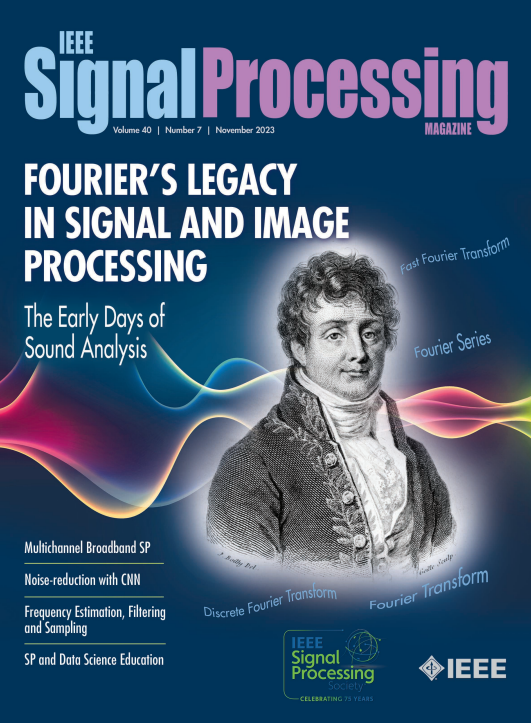Hypercomplex Signal Processing in Digital Twin of the Ocean: Theory and application [Hypercomplex Signal and Image Processing]
IF 9.4
1区 工程技术
Q1 ENGINEERING, ELECTRICAL & ELECTRONIC
引用次数: 0
Abstract
The digital twin of the ocean (DTO) is a groundbreaking concept that uses interactive simulations to improve decision-making and promote sustainability in earth science. The DTO effectively combines ocean observations, artificial intelligence (AI), advanced modeling, and high-performance computing to unite digital replicas, forecasting, and what-if scenario simulations of the ocean systems. However, there are several challenges to overcome in achieving the DTO’s objectives, including the integration of heterogeneous data with multiple coordinate systems, multidimensional data analysis, feature extraction, high-fidelity scene modeling, and interactive virtual–real feedback. Hypercomplex signal processing offers a promising solution to these challenges, and this study provides a comprehensive overview of its application in DTO development. We investigate a range of techniques, including geometric algebra, quaternion signal processing, Clifford signal processing, and hypercomplex machine learning, as the theoretical foundation for hypercomplex signal processing in the DTO. We also review the various application aspects of the DTO that can benefit from hypercomplex signal processing, such as data representation and information fusion, feature extraction and pattern recognition, and intelligent process simulation and forecasting, as well as visualization and interactive virtual–real feedback. Our research demonstrates that hypercomplex signal processing provides innovative solutions for DTO advancement and resolving scientific challenges in oceanography and broader earth science.海洋数字双胞胎中的超复杂信号处理:理论与应用 [超复杂信号与图像处理]
海洋数字孪生(DTO)是一个开创性的概念,它利用互动模拟来改进地球科学领域的决策和促进可持续性。DTO 有效地将海洋观测、人工智能(AI)、先进建模和高性能计算结合起来,将海洋系统的数字复制、预测和假设情景模拟结合起来。然而,要实现 DTO 的目标,还需要克服一些挑战,包括整合多坐标系的异构数据、多维数据分析、特征提取、高保真场景建模和交互式虚拟现实反馈。超复杂信号处理为应对这些挑战提供了一个前景广阔的解决方案,本研究全面概述了超复杂信号处理在 DTO 开发中的应用。我们研究了一系列技术,包括几何代数、四元数信号处理、克利福德信号处理和超复杂机器学习,作为 DTO 中超复杂信号处理的理论基础。我们还回顾了可从超复杂信号处理中获益的 DTO 的各种应用方面,如数据表示和信息融合、特征提取和模式识别、智能流程模拟和预测,以及可视化和交互式虚拟现实反馈。我们的研究表明,超复杂信号处理为推进 DTO 以及解决海洋学和更广泛的地球科学领域的科学挑战提供了创新解决方案。
本文章由计算机程序翻译,如有差异,请以英文原文为准。
求助全文
约1分钟内获得全文
求助全文
来源期刊

IEEE Signal Processing Magazine
工程技术-工程:电子与电气
CiteScore
27.20
自引率
0.70%
发文量
123
审稿时长
6-12 weeks
期刊介绍:
EEE Signal Processing Magazine is a publication that focuses on signal processing research and applications. It publishes tutorial-style articles, columns, and forums that cover a wide range of topics related to signal processing. The magazine aims to provide the research, educational, and professional communities with the latest technical developments, issues, and events in the field. It serves as the main communication platform for the society, addressing important matters that concern all members.
 求助内容:
求助内容: 应助结果提醒方式:
应助结果提醒方式:


